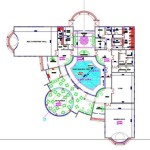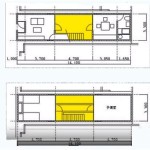What Is an Elevation Plan?
An elevation plan is a technical drawing that shows the vertical dimensions of a building or structure. It provides a comprehensive representation of the building's height, depth, and massing, enabling architects, engineers, and contractors to understand the building's overall form and scale. Elevation plans are crucial documents for planning and constructing buildings, as they serve as a guide for determining the building's height, the placement of windows and doors, and the overall aesthetic of the structure.
Components of an Elevation Plan
Elevation plans typically include the following key components:
- Building Outline: Outlines the perimeter of the building, including the foundation, walls, and roof.
- Vertical Dimensions: Shows the height of the building, from the ground level to the top of the roof.
- Windows and Doors: Indicates the location, size, and type of windows and doors.
- Architectural Details: Displays decorative elements, such as moldings, cornices, and porches.
- Exterior Finishes: Shows the materials used on the building's exterior, such as brick, siding, or stucco.
- Elevations: Typically, four elevations are provided: front, back, left, and right.
Purpose of Elevation Plans
Elevation plans serve several important purposes in the design and construction process:
- Design Visualization: They provide a visual representation of the building's overall appearance, allowing architects and clients to visualize the structure before construction begins.
- Structural Analysis: Elevation plans help engineers determine the structural requirements of the building, such as the size and placement of support beams and columns.
- Construction Guidance: Contractors use elevation plans as a guide for constructing the building, ensuring that the final structure matches the design intent.
- Permitting and Approval: Elevation plans are typically required for building permits and approvals, as they demonstrate compliance with building codes and zoning regulations.
Benefits of Elevation Plans
Using elevation plans offers numerous benefits for architects, engineers, contractors, and clients:
- Improved Design Coordination: Elevation plans facilitate collaboration between architects and engineers, ensuring that the design intent is accurately translated into construction drawings.
- Enhanced Structural Integrity: Elevation plans help identify potential structural issues early in the design process, reducing the risk of costly mistakes during construction.
- Efficient Construction: By providing a clear roadmap for construction, elevation plans streamline the building process, reducing delays and minimizing errors.
- Accurate Permit Approval: Elevation plans ensure that building permit applications are complete and meet regulatory requirements, reducing the risk of delays and denials.
- Enhanced Communication: Elevation plans provide a common language for architects, engineers, contractors, and clients, enabling effective communication and reducing misunderstandings.
Conclusion
Elevation plans are essential technical drawings that provide a comprehensive representation of a building's vertical dimensions. They serve as a valuable tool for design visualization, structural analysis, construction guidance, permitting, and communication. By understanding the components, purpose, benefits, and importance of elevation plans, professionals involved in the design and construction process can ensure the successful and efficient execution of building projects.

Elevations Designing Buildings

What Are Elevations Building Design House

Relationship Of Plan Elevation And Section Archi Monarch

Blueprint Basics Plan Section Elevation Drawings

How To Read House Plans Elevations

Example House Plans 3 Bedroom End Of Terrace Built To Let Fd8

I Ll Draw 2d Floor Plan Section Elevation In Autocad And Revit For 30 Freelancer Ekundayo Rilwan Realoneconsult Kwork

2d Color Floorplan Renderings And Elevation Drawing Services

Elevation Design Drawing Of House

How To Read House Plans Elevations








